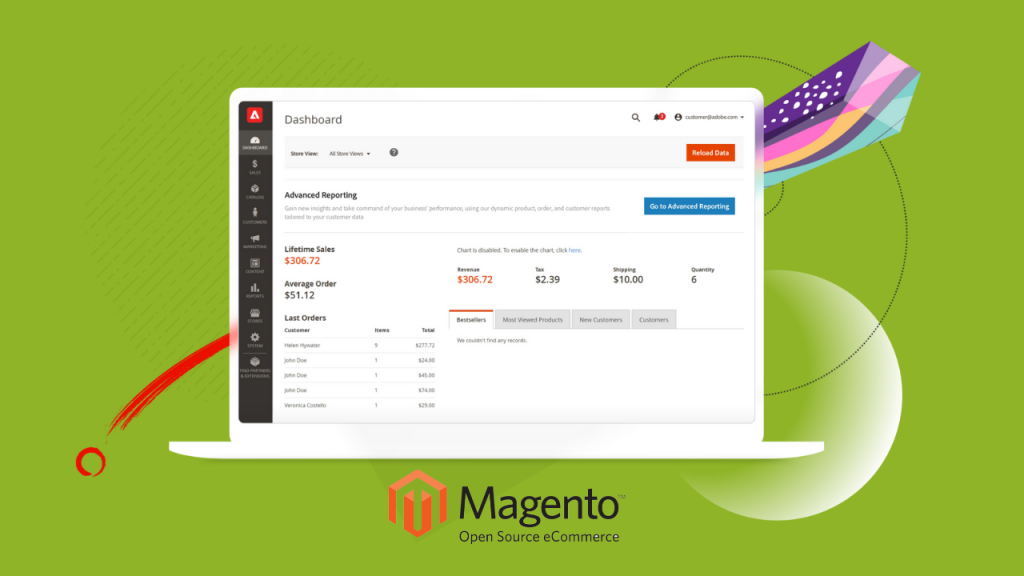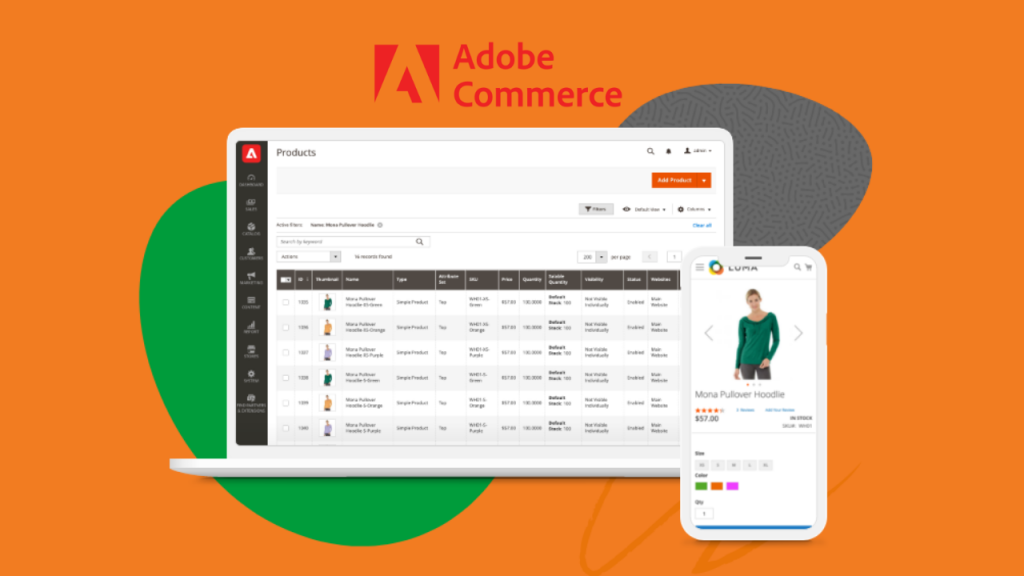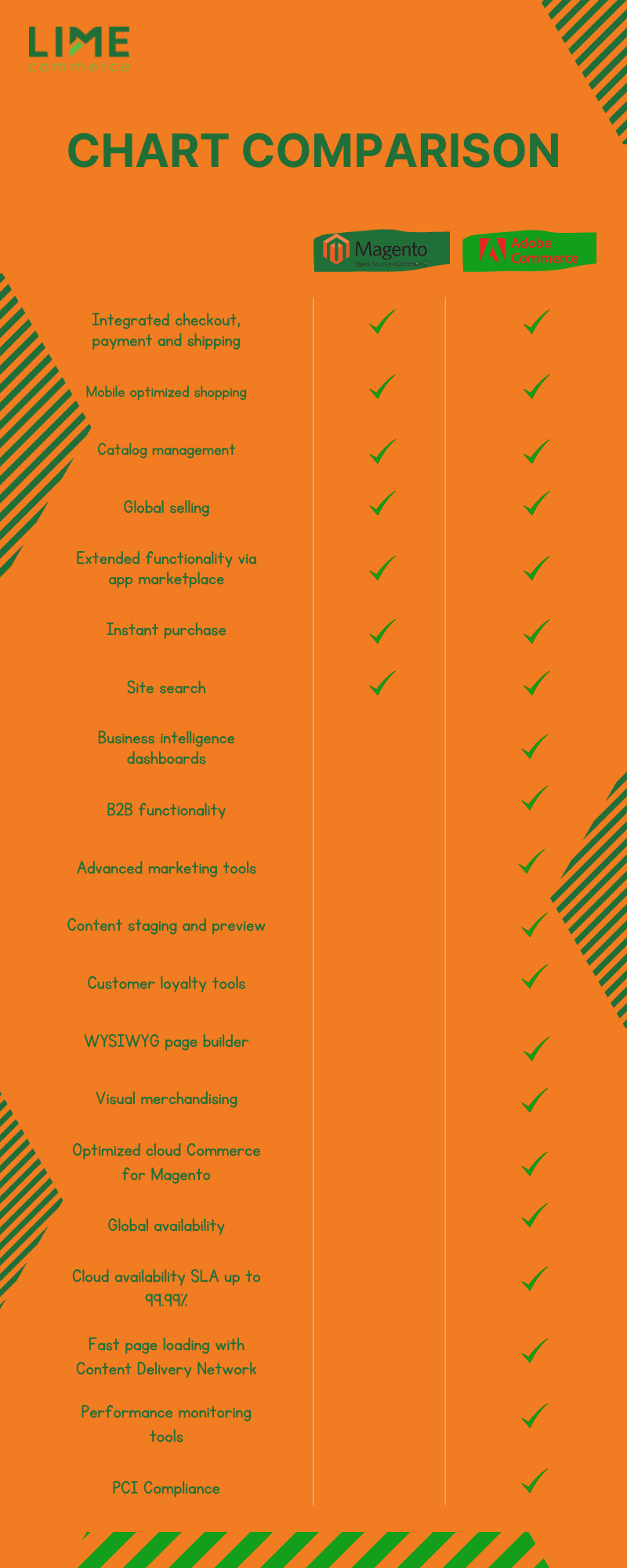
Magento Open Source vs Adobe Commerce, Which One is Best?
26 July 2022
By attalime
The rise of online stores is followed by the growth of the e-commerce business, especially when pandemics hit recently. According to Retail Asia, Indonesia’s e-commerce market is expected to post robust growth of 23.8% in 2022 to reach US$30 billion or Rp420.8 trillion as online shopping continues.
Seeing this potential will make business owners interested in the online store business with an e-commerce platform. But, choosing an e-commerce platform is not easy because you need to consider how your business is currently running and how you hope it works in the future. Besides, you must ponder if your current audience will remain the same, expand the products and offerings, and add new sales channels and marketplaces.
That’s why you need the right tools to deliver the digital experience to fulfill your customer expectations. One e-commerce platform you can consider the right tool is Adobe Commerce or Magento Open Source, formerly known as Magento Community.
So what’s the difference between Adobe Commerce and Magento Open Source? Which one is best for my business? Find out the answer in this article.
What is Magento Open Source?

Magento Open Source, also well-known as Magento Community Edition, is an open-source version of Adobe Commerce that allows experienced or tech-savvy coders to create online stores without paying expensive licensing fees or development fees.
This version allows unlimited customization options and extensions available on the Magento marketplace at no cost. That’s why this version is mainly suitable for small and medium-sized businesses so they can build highly successful websites.
Even though it’s a free version, Magento Open Source comes with all the features and capabilities. It is sufficient for small business and store owners’ needs by allowing them to add more integrations or extensions if required. And the good news is you can build your customized solutions if you know how to code or hire a developer to help you out.
So, let’s dive into the open-source platform’s built-in features below:
- Checkout, Payment, and Shipping Integration
- Mobile optimized Commerce
- Global selling
- Catalog Management
- Extended Functionality via App Marketplace
- Instant Purchase
- Site Search
- SEO and marketing
- And many more!
Well, these are the essential tools for modern eCommerce stores. But don’t compare the built-in capabilities with the Adobe Commerce platform since pricing and value differ.
What is Adobe Commerce?

Adobe Commerce, formerly known as Magento Commerce or Enterprise Edition, is the paid version of Magento Open Source. With this version, you will get advanced Magento functionalities and full access 24/7 to technical support.
Adobe Commerce is best suited for large-scale stores or enterprise companies needing direct full Magento support and Business Intelligence solutions where you can analyze consumer behavior and business metrics. It has complete built-in features so you can minimize the need for third-party extensions.
Let’s talk about the feature and capabilities of Adobe Commerce. It comes with all the features in the open-source version and dozens of additional capabilities and tools such as:
- Business intelligence dashboards
- B2B functionality
- Advanced marketing tools
- Content staging and preview
- Customer loyalty tools
- WYSIWYG page builder
- Visual merchandising
- Product recommendations
- Performance monitoring tools
- Customer segmentation
- Live search
- Gift cards
- System-wide analysis tool
- Customer success manager
- Global 24/7 availability
- And many more!
Adobe Commerce is also divided into Adobe Commerce and the Commerce Cloud. The Commerce Cloud is ideal for businesses wanting e-commerce software and hosting under Adobe for a level of stability and convenience that suits their needs.
The cloud is optimized for global availability up to 99.99% of the time. And if you choose this Commerce Cloud, you will get full onboarding support as you learn how to use and navigate the platform. And other benefits of the Commerce Cloud are:
- Fast page load using Content Delivery Network (CDN)
- Performance monitoring tools
- Web application firewall
- Upgraded security with Fastly WAF and DDoS services
- PCI compliance
- Easy deployment
- Streamlined updates and testing
The pricing for the Adobe Commerce edition starts at $22,000 per year. The Commerce Cloud pricing starts at $40,000 per year. The Adobe Commerce pricing model is based on annual Gross Merchandise Value (GMV) and Average Order Value (AOV).
So, the Adobe Commerce pricing will increase as your sales increase. Depending on your store revenue, the cost can rise to $100,000 and even more.
What is the difference between Magento Open Source & Adobe Commerce?
The main difference between Magento Open Source and Adobe Commerce is that Open Source is distributed free of charge. Adobe Commerce, on the other hand, is a premium paid option. It contains a long list of features to build yourself in the open-source version.
Let’s compare the two options using the following parameters.
- Cost
- Features
- Scalability
- Security
- B2B Functionalities
- Marketing
- Hosting
Cost
When we talk about the cost, as we’ve mentioned above, Magento Open Source is free, while Adobe Commerce is not because it has a license fee that is a percentage of your total annual revenue.
Since it costs a hefty price tag, it also has a much higher value for your business. Not only that, but you also need to consider what it will cost you in terms of developer time to create things already incorporated in the paid version.
Another thing to consider is the pricing model for Adobe Commerce, and you will need to pay higher when your revenue increases. But when your revenue is low, you will still have to pay the minimum license fee, which could be too high for your business. So if you object to the pricing model, the free platform may be a better fit.
Features
The free and paid versions of the e-commerce platform share similar core features, but choosing Adobe Commerce offers advanced features in several areas:
- Complete B2B suite: B2B quotes, company accounts, my purchase orders, quick order and requisition lists, company credit and payment on account, shared catalog, and company email configuration.
- Advanced search functionality: Search for product attributes, quick autocomplete functionality and intelligent corrections for misspelled queries.
- Cloud: PCI compliance, site-wide analysis tools, Fastly Web Application Firewall, New Relic APM, Magento BI (on-demand), CDN, and DDoS protection.
- Cloud Pro: B2B module, multiple environments, isolated and dedicated hardware setup, New Relic infrastructure and logs, and dedicated technical advisor on staff.
- Catalog and system: Scheduled data import/export, full catalog export, action logs, order archive, and order management system.
- Marketing: Google Tag Manager, private sales and events, related product rules, email reminders, visual merchandiser, and product recommendations.
- Advanced targeting and segmentation: Real-time segmentation, Dynamic and personalized product display, and customer attributes.
- Advanced content management: Page hierarchy, drag-and-drop content management with staging and preview features, and dynamic blocks.
- Gifting options: Ability to offer customizable gift cards, gift registries, rewards, loyalty systems, and vouchers.
- Add to cart by SKU: Allowing customers to add several items to the cart by entering the SKU list.
- Sales: Managing a shopping cart, returns, address search, and cart thumbnail photos.
- Support: 24/7 support available.
As expected, the features of the paid version are more advanced and powerful than the free version.
Scalability
When choosing the e-commerce platform, you will need to plan for scale from the beginning since it is a critical success factor. If you’re anticipating rapid growth, it’s a good idea to go with Adobe Commerce from the start because it gives a growing business the agility it needs. But if you opt for the free version, there’s a possibility you will face the risk of being held back and slowed down by having to build each component of your growth journey.
Security
Now, let’s talk about security. Adobe Commerce is considerably safety than Magento Open Source. The first problem is Open Source lacks credit card tokenization and advanced payment security, which can be problematic since it is required for secured transactions. Another problem is PCI DSS security.
On the other side, Adobe Commerce offers more advanced security solutions. It is “PCI compliant” and has the Magento Secure Payment Bridge for handling card processing. Besides, it has bug bounty programs, a regular scanning process, and secured payment gateways like PayPal, WorldPay, CyberSource, Authorize.net, and more. Another big plus is Action Logs in Adobe Commerce, which ensures every change made by users with access to the admin panel is recorded and stored.
B2B Functionalities
The most differentiating factor between Magento Open Source and Adobe Commerce is the B2B support, where only Adobe Commerce offers B2B functionalities and capabilities. Adobe Commerce offers an integrated B2B functionality to facilitate all complicated B2B workflows, transactions, quotes, ordering processes, etc. And to detailed, the notable B2B functionalities of Adobe Commerce are:
- Customer-specific catalogs and pricing
- Personalized experiences
- Place orders on behalf of customers
- Self-service customer portals
- Quote management
- Targeted content and promotions
- Quick order forms
- Seller assisted shopping
- Customers can self-manage their company accounts
- Ability to upload lists of SKUs
Adobe Commerce is the best choice if you are a B2C brand having plans to venture into the B2B market. But if you do not have that plan, Magento Open Source would suffice for your business needs.
Marketing
Marketing is at the forefront of the brand’s ability to attract visitors and turn them into customers. Your e-commerce platform should help you understand better who your best customers are, how they discover your site, their actions, and which segments are your most valuable. Analytical tools on its platform also need to provide insights on the best ways to reach and engage with them.
While Magento Open Source has basic marketing capabilities, it has some essential marketing benefits that only Adobe Commerce offers.
- Business Intelligence Dashboards – An advanced analytics tool to derive insights into users’ digital interactions from your online store.
- Customer Segmentation – Help businesses segment customers to customize pricing and marketing strategies.
- Targeted Promotions & Merchandising – Adobe Commerce can target customers with the most relevant marketing messages and bundle products program for upselling and cross-selling opportunities.
- Product recommendations – The AI-powered product recommendation engine, Adobe Sensei, provides personalized suggestions to increase the conversion rate.
Hosting
Both Magento Open Source and Adobe Commerce offer on-premises hosting only. For brands that require cloud scalability, Adobe Commerce offers a fully-hosted version of Adobe Commerce Cloud with AWS. With Adobe Commerce Cloud, you will get:
- Cloud availability SLA up to 99.99%
- Global Availability
- Fast page loading with Content Delivery Network (CDN)
- Performance monitoring tools
- Web application firewall
Adobe Commerce Cloud also provides onboarding support for easy deployment and management of your e-commerce application infrastructure.
Or, to make it easier to digest, let’s look at the overview picture describing Magento Open Source and Adobe Commerce feature list below.

Which Version is Best For Your Business?
Whether you choose paid or free, Adobe provides a solid foundation for building an e-commerce store. Features provided by both Magento Open Source and Adobe Commerce include a responsive web experience across devices, easy checkout, payments, standard shipping, and basic site management. It is enough to run a simple website that offers a single purchase path but limits how customers interact with the product.
However, the paid version improves the customer experience in several ways. The key drivers of Adobe Commerce include out-of-the-box capabilities, B2B suites, advanced cloud capabilities, ElasticSearch, existing CMS capabilities, content staging and previewing customized delivery, and integration with Adobe Experience Manager.
You also need to consider the future. Do you need features in multiple locations, languages, and currencies? Do you want to use transaction data for business intelligence? Can I get to the market faster by dragging and dropping visual merchandising? Do you want to cross-sell or up-sell? If yes, then Adobe Commerce is a valuable option.
Limecommerce, a Magento development service, provides whatever e-commerce platform you need, whether Magento Open Source or Adobe Commerce. We have more than eight years of experience and have helped many businesses build a strong foundation for their success in online sales. Please contact us; our business development will gladly assist and help you answer your questions or doubts.
